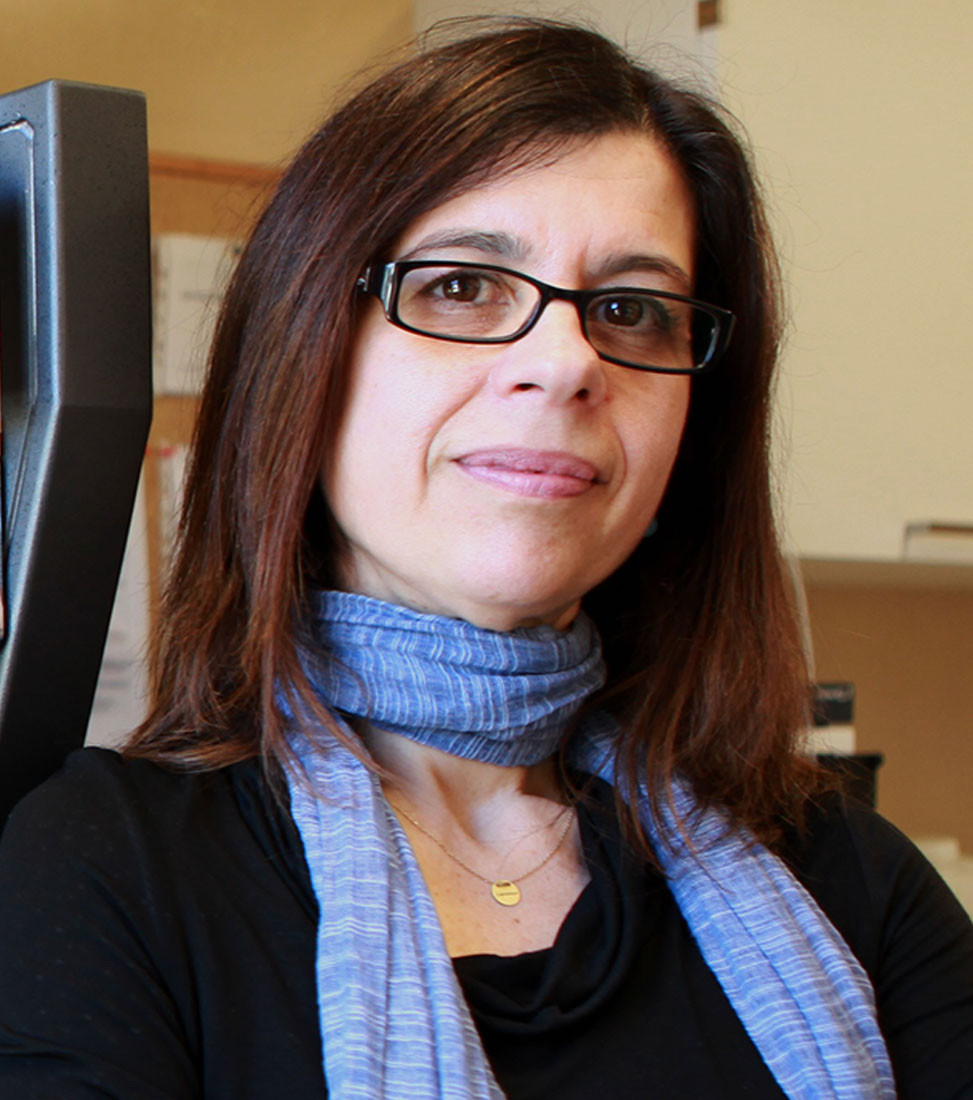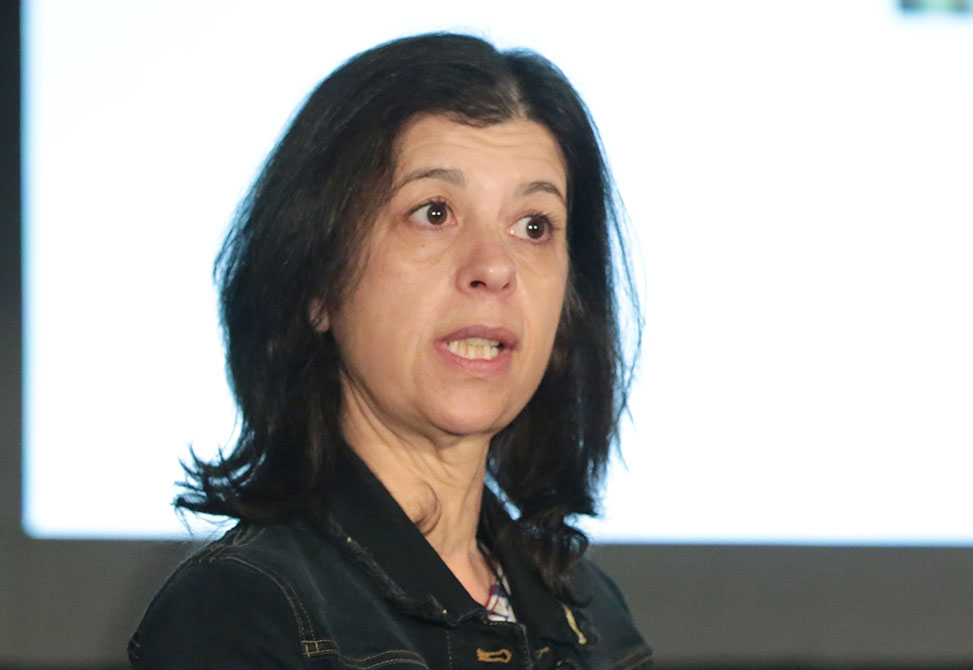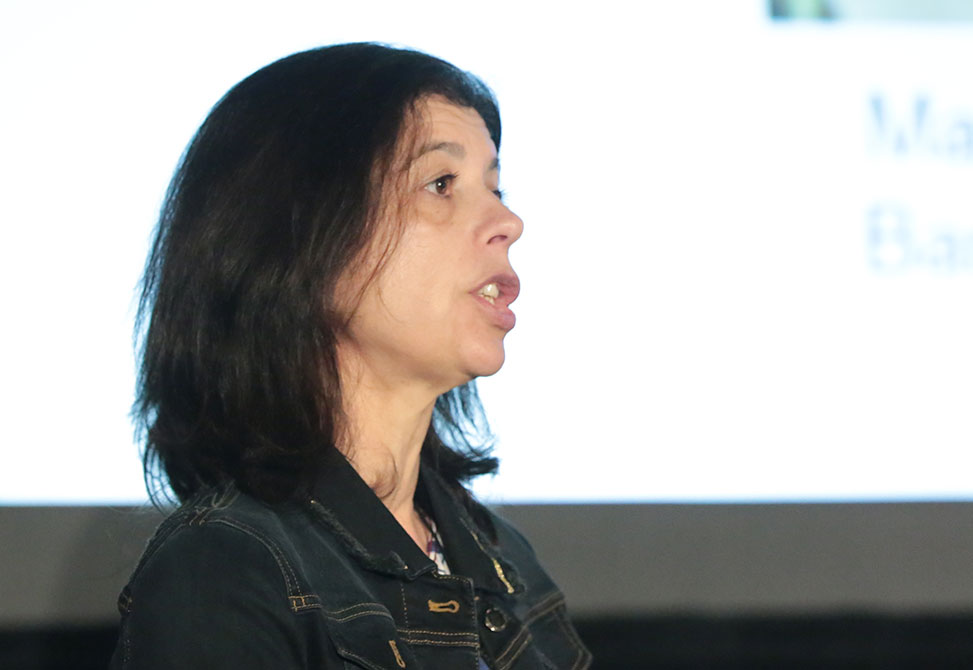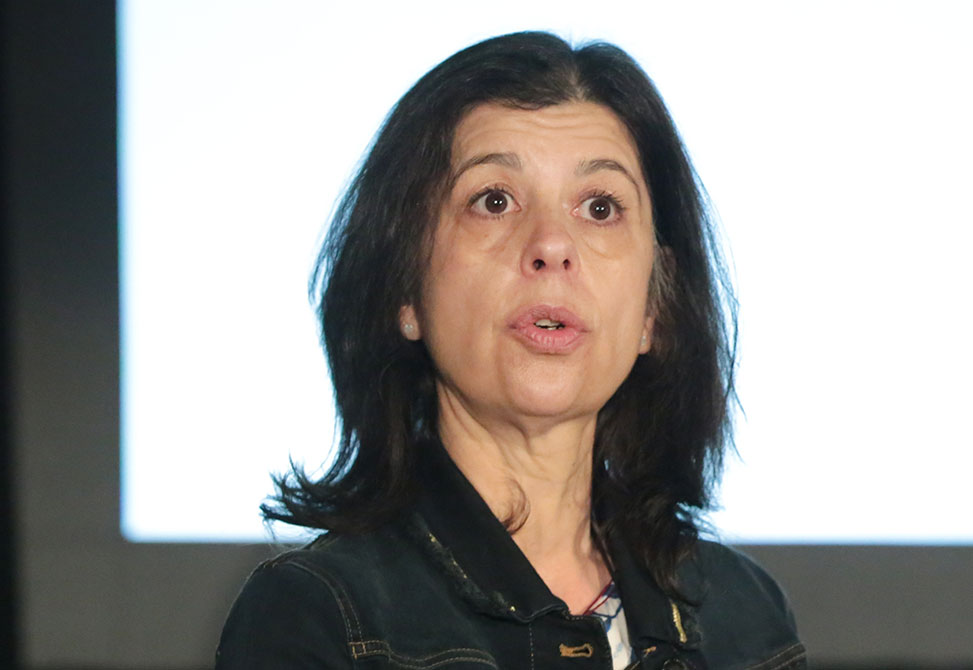Paula Gomes
University of Porto, Portugal
Talk Title
"Clicking" Peptides to Biomaterials and to Ionic Liquids: Towards Dual-Action Topical Formulations for Skin and Soft Tissue Infections
Presentation Time
SESSION 10: BIOINSPIRED & INTELLIGENT PEPTIDE MATERIALS
Wednesday, June 28, 2023, at 11:55 am - 12:15 pm
"Clicking" Peptides to Biomaterials and to Ionic Liquids: Towards Dual-Action Topical Formulations for Skin and Soft Tissue Infections
Multidrug-resistance, MDR, is spiraling worldwide, and the currently available antibiotics are no longer able to provide an efficient response. Alongside the growing life expectancy and aging-associated diseases, MDR underlies the concerning rise of the incidence, the severity, and the chronicity of both medical device associated infections in soft tissues, for example, implant- and catheter-associated infections, and non- healing wounds, for example, venous leg ulcers, diabetic foot ulcers, and pressure ulcers.1
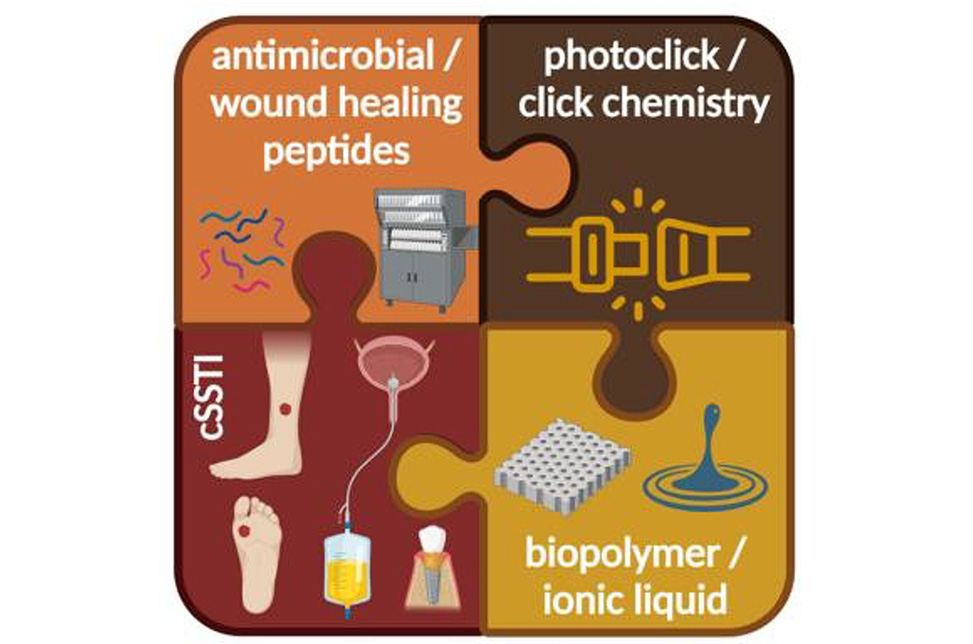
Such complicated skin and soft tissue infections, cSSTI, typically have a polymicrobial nature, often associated to mixed species biofilms involving some of the most concerning MDR bacterial pathogens of the so-called ESKAPE group as well as pathogenic fungi.1 Host defense peptides, HDPs, encompassing antimicrobial and/or immunomodulatory molecules, are increasingly regarded as key players towards the post-antibiotic era, including for topical use, where the ability to promote fast recovery of a healthy skin is equally important.
In this regard, our group has been using [photo]click chemistry as a tool to produce peptide-based constructs, including peptide-grafted biomaterials and peptide-ionic liquid conjugates,2 aiming at concomitant antimicrobial, antibiofilm, and collagen-boosting actions. Latest findings will be highlighted herein.
References
1 a, Ana Gomes, Cátia Teixeira, Ricardo Ferraz, Cristina Prudêncio, and Paula Gomes. Wound-Healing Peptides for Treatment of Chronic Diabetic Foot Ulcers and Other Infected Skin Injuries. Molecules, 2017, 22(10), 1743
1 b, Bruna Costa, Guillermo Martínez-de-Tejada, Paula A. C. Gomes, M. Cristina L. Martins, and Fabíola Costa. Antimicrobial Peptides in the Battle against Orthopedic Implant-Related Infections: A Review. Pharmaceutics, 2021, 13(11), 1918
1 c, Ana Gomes, Luísa Aguiar, Ricardo Ferraz, Cátia Teixeira, and Paula Gomes. The Emerging Role of Ionic Liquid-Based Approaches for Enhanced Skin Permeation of Bioactive Molecules: A Snapshot of the Past Couple of Years. Int. J. Mol. Sci. 2021, 22(21), 11991.
2 a, Mariana Barbosa, Fabíola Costa, Cláudia Monteiro, Filipa Duarte, M Cristina L Martins, and Paula Gomes. Antimicrobial Coatings Prepared from Dhvar-5-Click-Grafted Chitosan Powders. Acta Biomater. 2019, Jan 15; 84: 242-256.
2 b, Ana Gomes, Lucinda J. Bessa, Iva Fernandes, Ricardo Ferraz, Nuno Mateus, Paula Gameiro, Cátia Teixeira, and Paula Gomes. Turning a Collagenesis-Inducing Peptide Into a Potent Antibacterial and Antibiofilm Agent Against Multidrug-Resistant Gram-Negative Bacteria. Front. Microbiol. 2019, 10, 1915.
2 c, Cláudia Monteiro, Hélia Fernandes, Diana Oliveira, Nuno Vale, Mariana Barbosa, Paula Gomes, and M. Cristina L. Martins. AMP–Chitosan Coating with Bactericidal Activity in the Presence of Human Plasma Proteins. Molecules 2020, 25(13), 3046.
2 d, Ana Gomes, Lucinda J. Bessa, Patrícia Correia, Iva Fernandes, Ricardo Ferraz, Paula Gameiro, Cátia Teixeira, and Paula Gomes. "Clicking" an Ionic Liquid to a Potent Antimicrobial Peptide: On the Route towards Improved Stability. Int. J. Mol. Sci. 2020, 21(17), 6174.
2 e, Ana Gomes, Lucinda J. Bessa, Iva Fernandes, Ricardo Ferraz, Cláudia Monteiro, M. Cristina L. Martins, Nuno Mateus, Paula Gameiro, Cátia Teixeira, and Paula Gomes. Disclosure of a Promising Lead to Tackle Complicated Skin and Skin Structure Infections: Antimicrobial and Antibiofilm Actions of Peptide PP4-3.1. Pharmaceutics 2021, 13(11), 1962.
2 f, Pedro M. Alves, Rúben F. Pereira, Beatriz Costa, Natália Tassi, Cátia Teixeira, Victoria Leiro, Cláudia Monteiro, Paula Gomes, Fabíola Costa, and M. Cristina L. Martins. Thiol–Norbornene Photoclick Chemistry for Grafting Antimicrobial Peptides onto Chitosan to Create Antibacterial Biomaterials. ACS Appl. Polym. Mater. 2022, 4, 7, 5012–5026.
2 g, Ana Gomes, Lucinda J. Bessa, Iva Fernandes, Luísa Aguiar, Ricardo Ferraz, Cláudia Monteiro, M. Cristina L. Martins, Nuno Mateus, Paula Gameiro, Cátia Teixeira, and Paula Gomes. Boosting Cosmeceutical Peptides: Coupling Imidazolium-Based Ionic Liquids to Pentapeptide-4 Originates New Leads with Antimicrobial and Collagenesis-Inducing Activities. Microbiol. Spectr. 2022, 10, e02291-21.
Funding
This work was funded by Fundação para a Ciência e Tecnologia, I.P., FCT, Portugal, through project CIRCNA/BRB/0281/2019.
Acknowledgements
Thanks are due to FCT for funding LAQV-REQUIMTE through project UIDB/50006/2020. Thanks are also due to all present and past members of the Paula Gomes Lab, and to the teams of Prof. Drs. Paula Gameiro, LAQV-REQUIMTE, FCUP, M. Cristina L. Martins, i3S-UP, Eugénia Carvalho and Teresa Gonçalves, CNC-UC, for their active and deep involvement in the research projects covered in this communication.
Paula joined the Chemistry and Biochemistry Department at the University of Porto in 1993, where she has since been devoted to both Teaching and Research. She finished her M.Sc. Thesis in Organic Chemistry in 1996, in the same Department, and concluded her Ph.D. in Peptide Chemistry in 2000, in the Faculty of Chemistry of the University of Barcelona, Spain. Since her return to the University of Porto, in 2001, Paula built her own research team, devoted to Peptide Synthesis and Medicinal Chemistry.
Paula coordinates the Peptide Synthesis Facility of the Faculty of Sciences of the University of Porto, and has been recently appointed Secretary of the European Peptide Society and the Portuguese national representative at Division VII - Chemistry and Human Health, of the International Union for Pure and Applied Chemistry, IUPAC.
